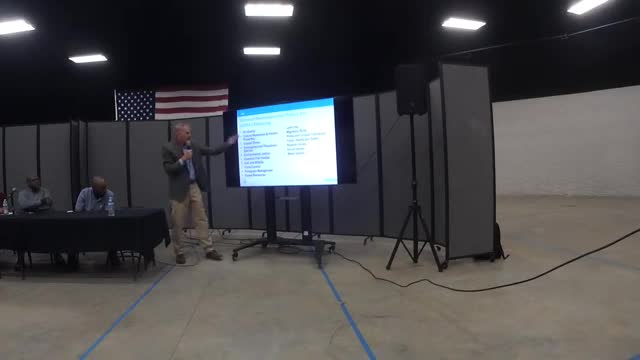Community consultation sparks debate over dam project impacts
September 30, 2024 | Oktibbeha County, Mississippi
This article was created by AI summarizing key points discussed. AI makes mistakes, so for full details and context, please refer to the video of the full meeting. Please report any errors so we can fix them. Report an error »

In a recent government meeting, officials discussed the environmental and cultural assessments related to a proposed project involving a dam in Mississippi. Key topics included air quality impacts during construction, the evaluation of historical structures, and consultations with local tribes.
The meeting highlighted the potential air quality issues stemming from the influx of construction vehicles, specifically noting the arrival of numerous dump trucks. Officials emphasized the importance of assessing these impacts both during and after construction.
A significant portion of the discussion focused on cultural resources, particularly the ongoing Section 106 consultation with the Mississippi Department of Archives and History. A desktop survey identified 21 structures from the mid-1950s and 17 from the early 1980s within the study area. However, it was determined that the dam itself, despite being over 50 years old, would not be considered significant due to extensive modifications over the years.
Consultations with local tribes have also commenced, with several tribes expressing interest in being kept informed about the project. The officials noted that a programmatic agreement would be necessary, regardless of whether the dam is decommissioned or an alternative structural solution is pursued.
The meeting further addressed the evaluation of natural resources, including federally and state-listed threatened and endangered species in the area. Species such as the northern long-eared bat and the peregrine falcon were mentioned, with officials confirming that assessments would be conducted for each identified resource.
Looking ahead, the officials outlined the next steps, which include gathering public input, selecting a preferred alternative, and conducting further analysis to ensure compliance with all criteria. They stressed that the decision would not solely be based on cost, as previous projects in Mississippi have demonstrated a willingness to prioritize other factors.
The meeting concluded with an invitation for public questions and comments, underscoring the importance of community engagement in the decision-making process.
The meeting highlighted the potential air quality issues stemming from the influx of construction vehicles, specifically noting the arrival of numerous dump trucks. Officials emphasized the importance of assessing these impacts both during and after construction.
A significant portion of the discussion focused on cultural resources, particularly the ongoing Section 106 consultation with the Mississippi Department of Archives and History. A desktop survey identified 21 structures from the mid-1950s and 17 from the early 1980s within the study area. However, it was determined that the dam itself, despite being over 50 years old, would not be considered significant due to extensive modifications over the years.
Consultations with local tribes have also commenced, with several tribes expressing interest in being kept informed about the project. The officials noted that a programmatic agreement would be necessary, regardless of whether the dam is decommissioned or an alternative structural solution is pursued.
The meeting further addressed the evaluation of natural resources, including federally and state-listed threatened and endangered species in the area. Species such as the northern long-eared bat and the peregrine falcon were mentioned, with officials confirming that assessments would be conducted for each identified resource.
Looking ahead, the officials outlined the next steps, which include gathering public input, selecting a preferred alternative, and conducting further analysis to ensure compliance with all criteria. They stressed that the decision would not solely be based on cost, as previous projects in Mississippi have demonstrated a willingness to prioritize other factors.
The meeting concluded with an invitation for public questions and comments, underscoring the importance of community engagement in the decision-making process.
View full meeting
This article is based on a recent meeting—watch the full video and explore the complete transcript for deeper insights into the discussion.
View full meeting
